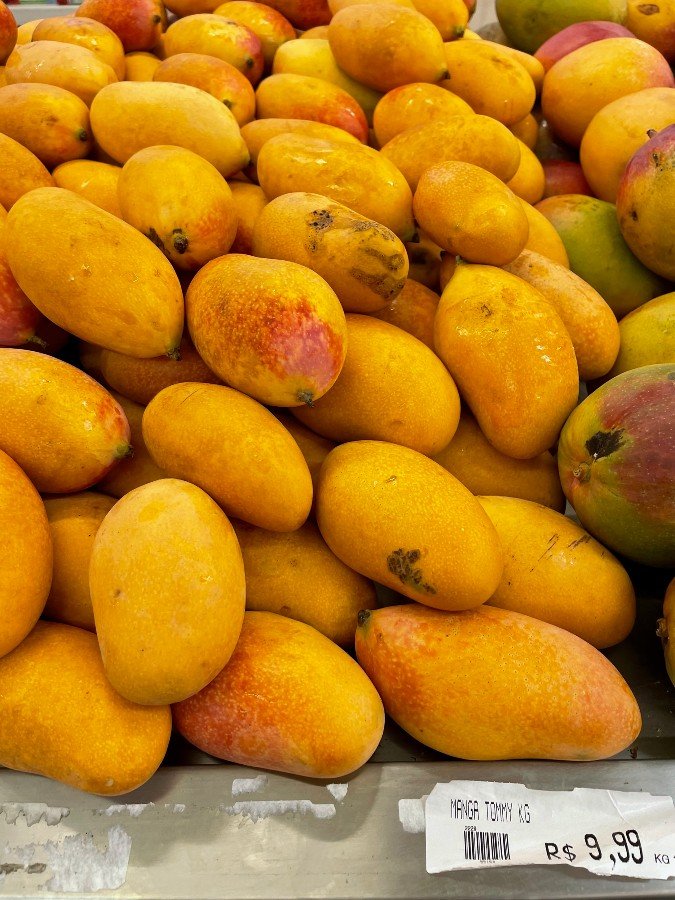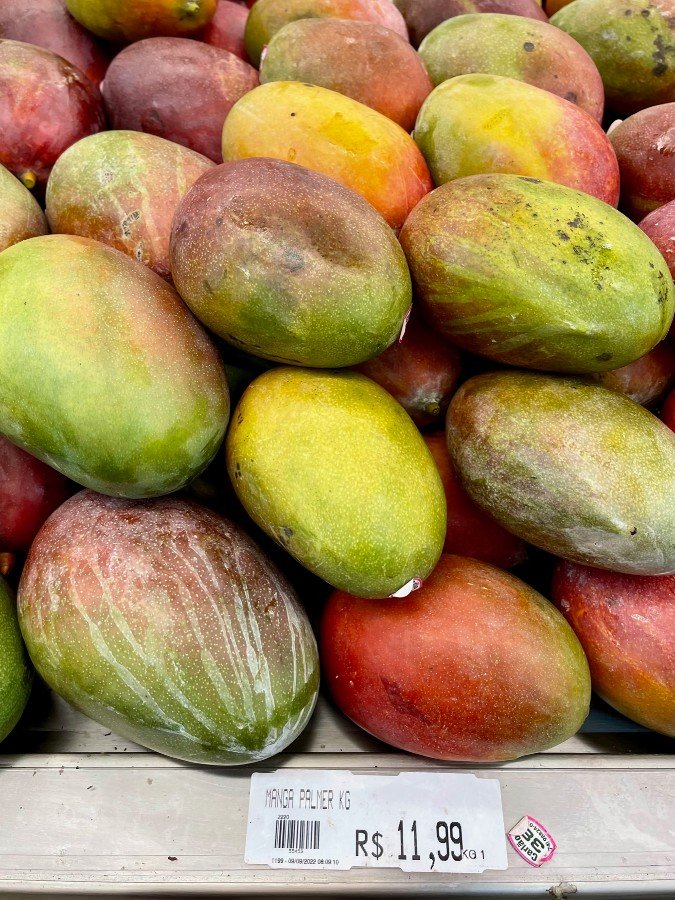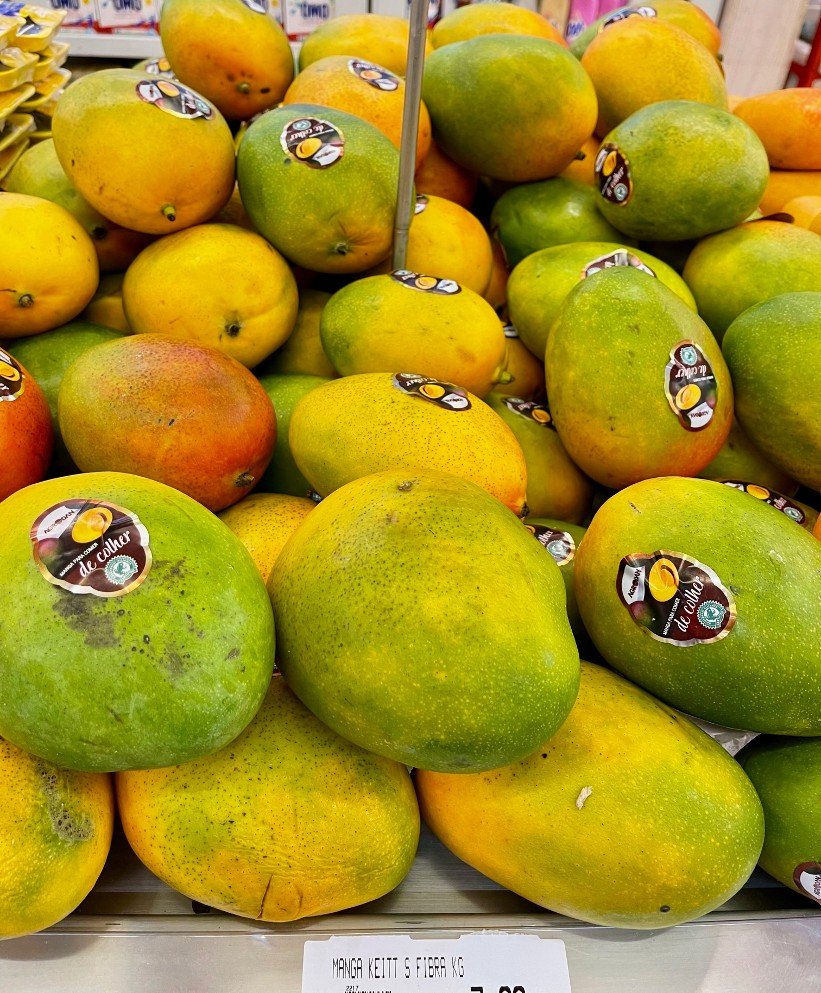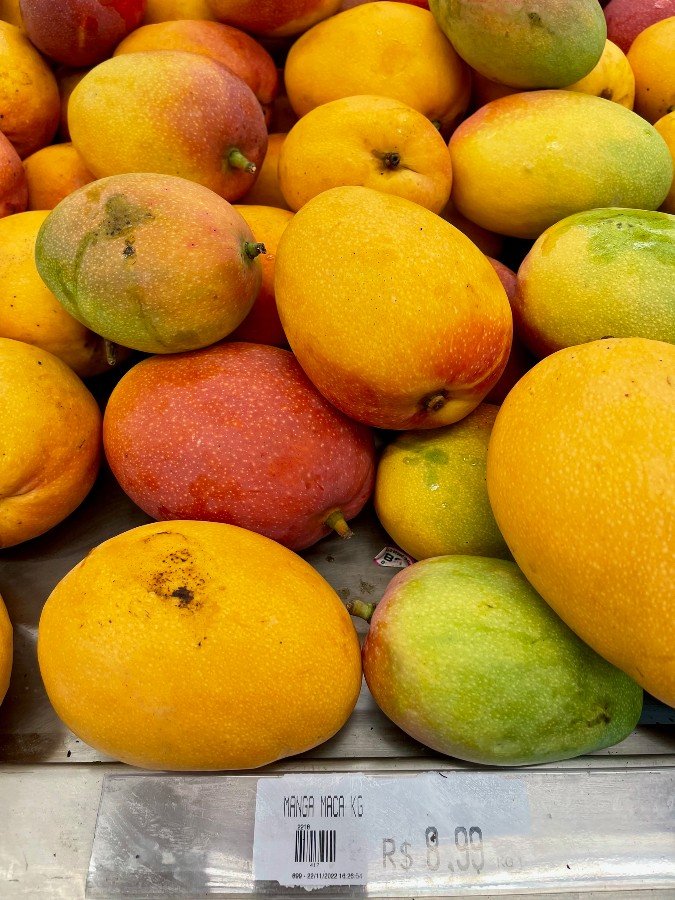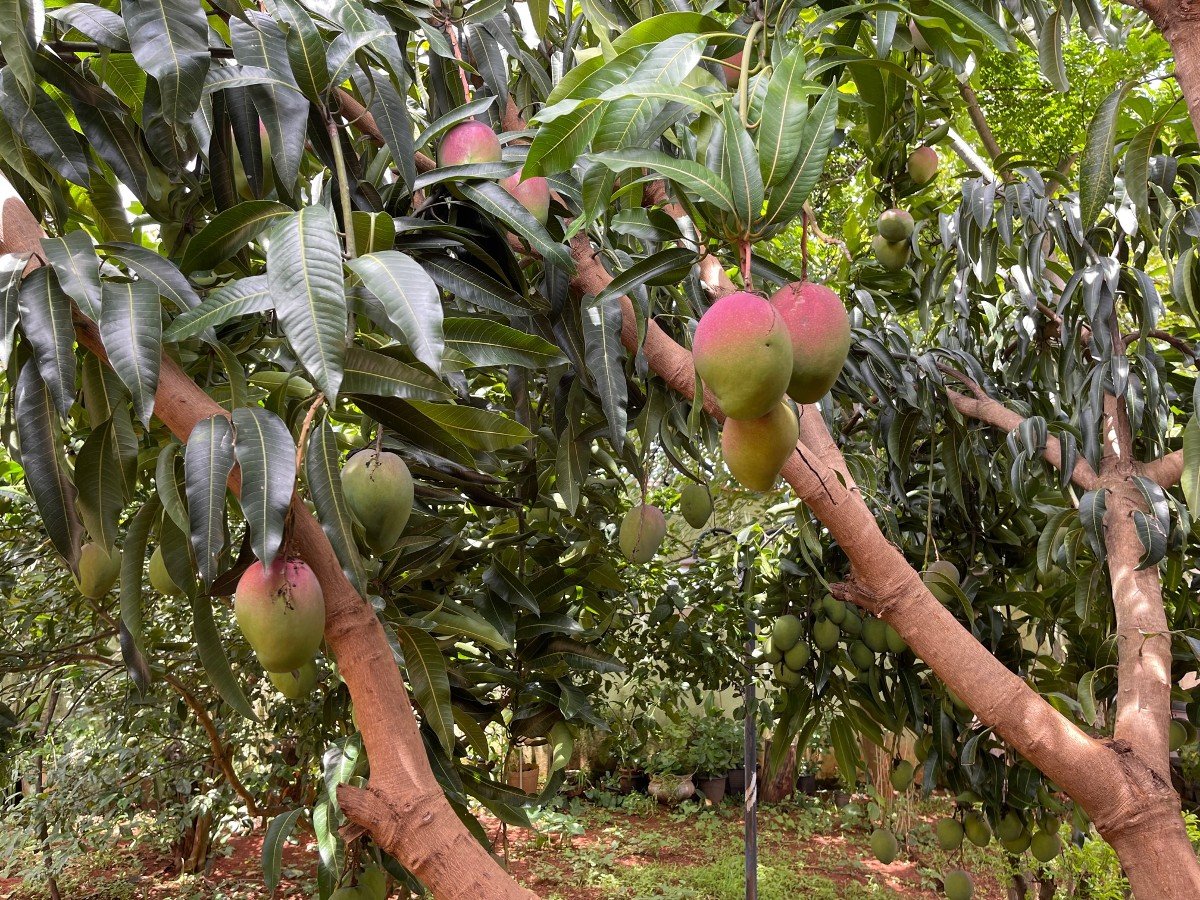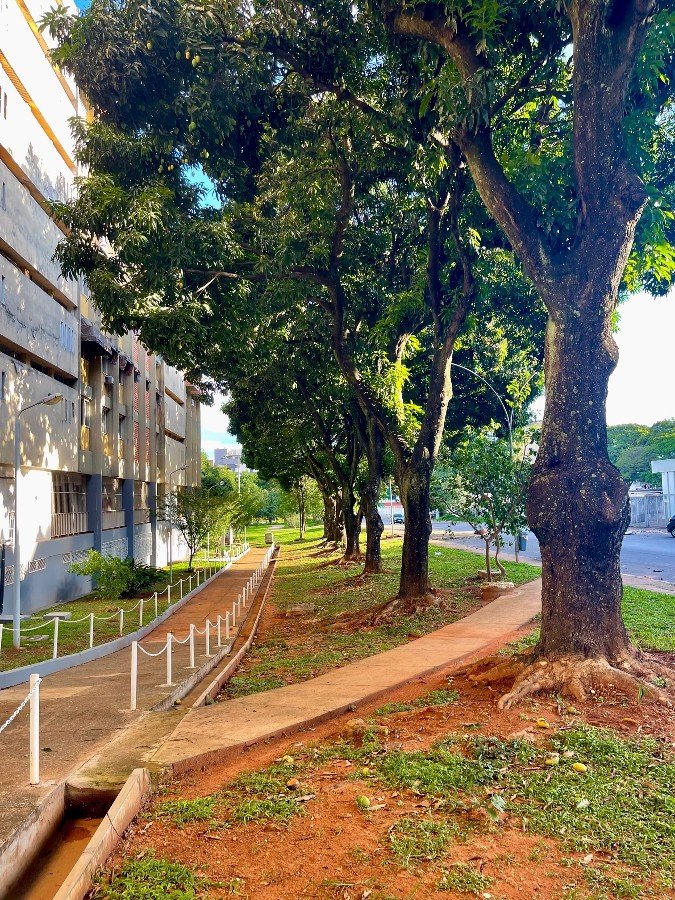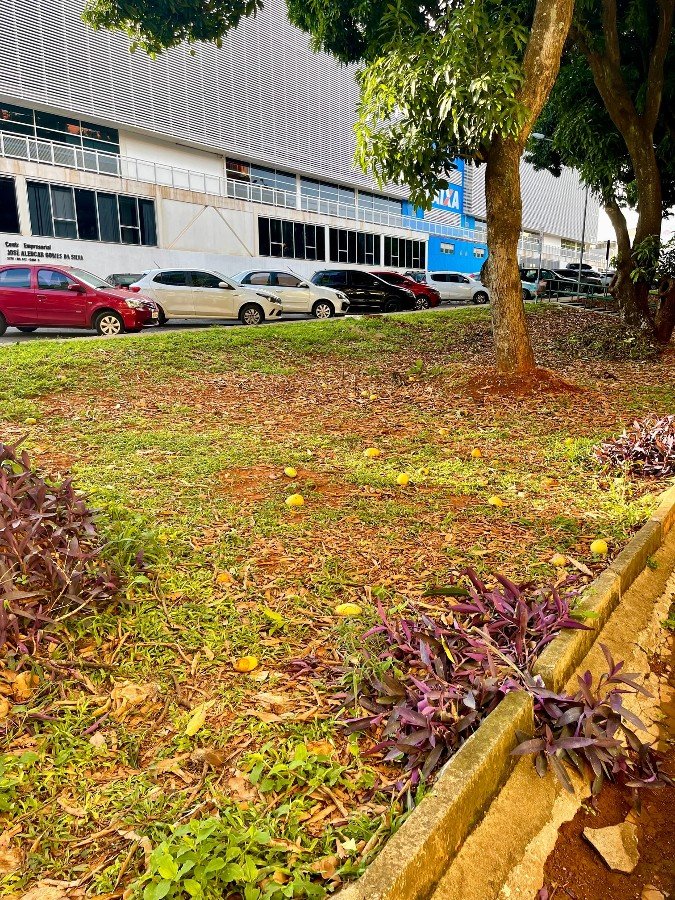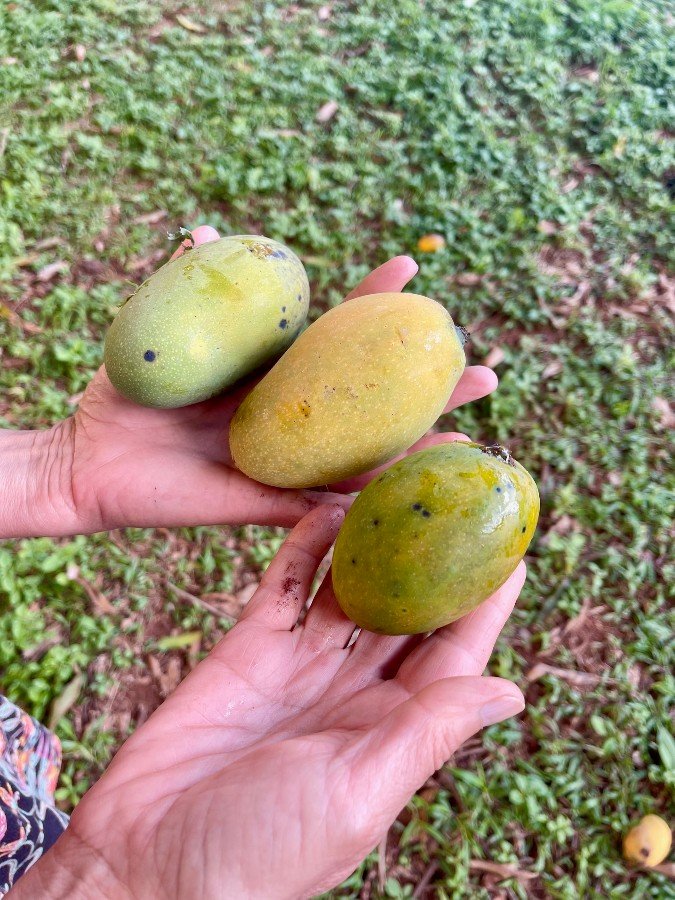Mango: beautiful, delicious and even dangerous
Mangos (or mangoes, depending on your preference) are everywhere in Brazil, the towering trees offering shade and fruit in such abundance it is there for the taking on public lands. I’m here in Brazil just at the beginning of peak mango season in Brasília, but they are available year-round in markets, and Brazil is a main exporter. Peak mango season is October to January.
The Portuguese discovered mangos as they began the spice trade in 1498, in the area of Kerala in southernmost India. Mango trees were not planted in Brazil until around 1700, due to difficulty in propagation. Mango trees grow by planting the pit, but they are not viable once they dry out. Once established, the mango tree is very long-lived, some reported to be bearing after 300 years. Over the centuries mangos have come to be cultivated throughout the tropical regions of the globe. Mango is manga in Portuguese, probably after the term manna in the language Mayalam.
Mangos are high in antioxidant precursors, especially mangiferin, which makes sense because the botanical name of mango is Mangifera indica. Mangos are also rich in Vitamin C and folate. They have low caloric density, meaning the volume of the food to the number of calories is high. There are 100 calories in 165 grams ( about 6 ounces) of the fruit.
There are hundreds of varieties of mango worldwide, and many different ones in Brazil. The most dominant type for export is Tommy, or Tommy Atkins. It is easily transported, having been first hybridized for commercial production from the Haden variety in Florida in 1940. It isn’t the tastiest mango out there, but just like tomatoes and apples in the US, preference is given to shelf life over flavor.
Tommy
Another mango hybridized in Florida and widely available commercially in Brazil and elsewhere is Palmer. This variety doesn’t have as many fibers, whereas many mangos have so many hairy fibers you are advised to have dental floss at the ready.
Palmer
Yet another Florida hybrid is Keitt, which was introduced in Brazil in the 1960s. They also have very little fiber and can be huge; they are deep red when ripe.
Keitt (the label says to eat with a spoon)
The mango maçã is a Brazilian cultivar, maçã meaning apple. It is also called coração de boi, beef heart, like the large variety of tomato found in Portugal. There is also a banana called maçã, though neither the banana nor the mango really tastes like apples. This variety is also low in stringy fibers.
Maçã
It’s a sad fact that mangos exported while green will never have the flavor of a mango fresh from the tree. A fresh mango is a marvel, and I will never forget eating the first mango I picked from a tree in Bahia. It was January and the fruit was bursting with flavor. I had never had a mango before, and I stood on the veranda chewing and slurping with juice running down my arms. Happily, I was taught to carefully avoid contact with the outside of the peel—but more on that in a minute.
My mother-in-law has a mango tree in her courtyard, and the mangos are just starting to ripen.
Dona Judite’s mangueira
My favorite mango is never found in grocery stores, and rarely in fresh markets. It’s the tiny coquinho, and it’s hard to describe the flavor in words. Somehow it has a greenish taste, and a bit of acidity. My friend Cristina and I went looking for them recently on a street nearby her apartment, where there is a beautiful alameda (a promenade shaded by a line of trees) of mangos.
Alameda of mango trees
The fruit falls on the ground and people pick them up, though you have to be quick because they spoil easily.
Mangos for the taking . . .
The coquinhos don’t last long after they fall, because they are highly prized, and people rush to collect them. The best time is right after a rain, when the ripe mangos fall from their weight and the wind.
Coquinho mango (right)
So, why would I say that mangos can be dangerous? It’s because to the unsuspecting, they can cause a terrible dermatitis around the mouth. That sticky sap on the outside of mangos contains urushiol, the same substance found in poison ivy and poison oak. Anyone who has been sensitized by previous bouts with poison ivy or oak is especially susceptible. Though some web sources I’ve researched suggest it is rare, I think it’s more often just misdiagnosed, most often as cold sores (herpes simplex). In my years of clinical practice in primary care, I’ve had several encounters with patients suffering from oral dermatitis, often put in my schedule because I had an opening, even if they were patients new to me. I would walk into the exam room, introduce myself, elicit their concern and then say, “So, when did you eat the mango?” This always resulted in amazement at my telepathic ability because people have never heard of such a thing. The rash around the mouth is usually blistery and then honey crusty, itchy and then painful, making it hard to talk or eat until the rash clears up. Oral corticosteroids may be prescribed in severe cases, but because the rash is localized the best approach is usually what we call in medicine “tincture of time.”
An ounce of prevention, as they say, is worth a pound of cure. So how to avoid the problem, without completely avoiding mango? First, wash the outside of the mango with soap and water before cutting into it. Liquid dish detergent is just fine.
You can then cut off the peel or use the “hedgehog” method of mango preparation, scoring the pulp inside the peel and turning it inside out.
I have managed to avoid problems using these approaches, and I have a bad history of severe poison oak (California) and poison ivy (Louisiana, North Carolina) reactions. But it must be said that severe, even life-threatening reactions are rare but possible. In the case of a previous severe reaction, it’s probably best to give mangos a pass.
When I have lunch with my Brazilian family, they often offer cut mango as part of the meal, alongside the salad. I wait to add mango to my plate until after eating the main dishes, it’s so sweet I can only think of it as dessert.
Brazilians will often say they chupar mango, meaning to suck. This makes sense when you think of the fibrous mangos with their large pits, where after cutting off the pulp there’s still a lot of mango around the pit. My mother-in-law absolutely adores mangos, and she loves to chupar the mango pit, so we always save it for her.

